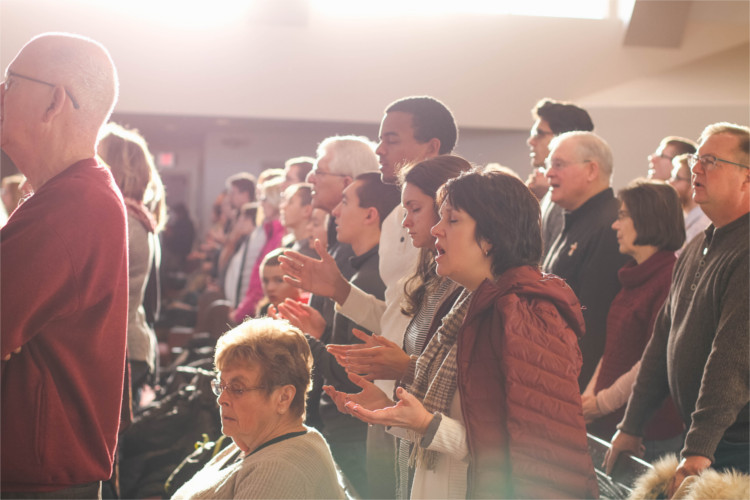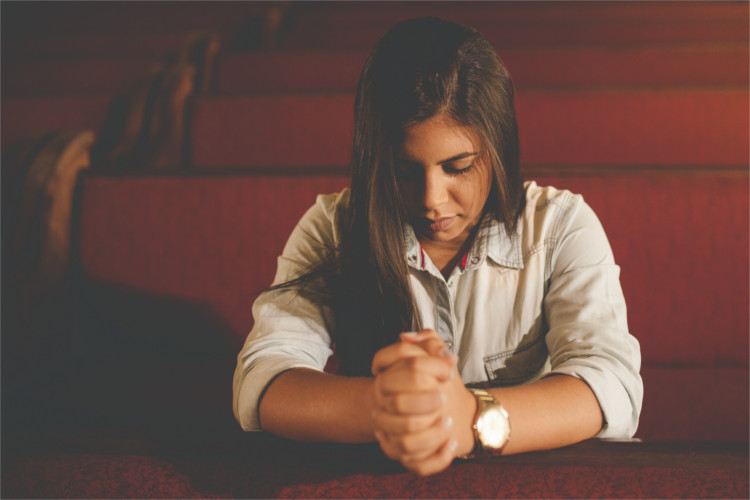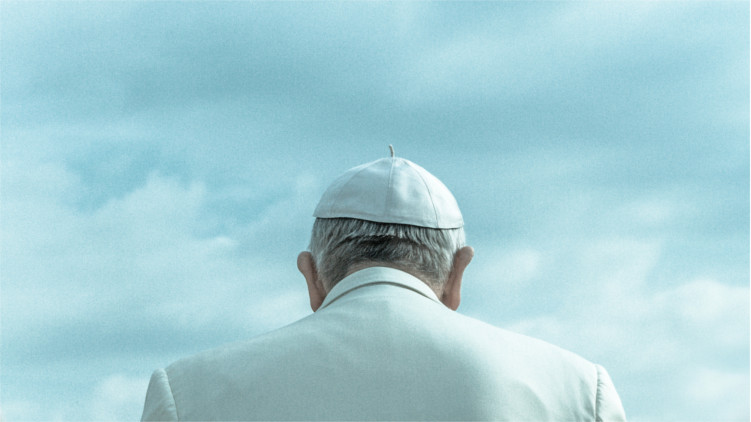The Empire of Misogyny – Tales of The Catholic Church
Almost exactly five years ago, I attended the Commission on the Status of Women, an annual event at the UN in New York dedicated to women’s rights. It’s quite a big deal, attracting government officials, politicians and academics as well as hosts of feminist NGOs and activists. The theme of the 2-week Commission in 2013 was eliminating Violence Against Women, and I was there as the policy officer for an Irish NGO. The very last thing I attended, before climbing into a taxi to return home for St Patrick’s Day, was a side event hosted by the Holy See. A Vatican event on eliminating Violence Against Women. What was I thinking? I shouldn’t have gone.
Inside a large prefabricated building, we were crammed into a board room, dominated by an immense round table, with a narrow double line of chairs pushed against the walls. Bustling around the table was a Vatican civil servant in an ankle-grazing black robe and collar, a cleric whose rank I couldn’t detect, though he had a deferential manner about him. At the table’s head was the papal nuncio to the United Nations, Archbishop Francis A. Chulikatt, also in elaborate priestly garb. He was flanked by the event’s four female panellists in sharp business apparel. The seats around the table were reserved with place markings, some with names, most with titles: mainly simply Ambassador. This was most uncommon at the CSW, where usually if you had access to an event, you could sit where you liked. Not so for the Holy See. By the time the event started, the room was well past its capacity of 70 people, there were academics and politicians sitting on the floor, alongside missionaries and medics. The chairs reserved for unnamed senior diplomats remained unoccupied throughout.

Of course, the room was packed, because people are drawn to conflict, and we anticipated egregiously offensive comments and egregious offence-taking. Diplomatic and political staffers aren’t above the false binaries that drive media coverage of the church. But I wanted to be proved wrong. Remember, the context was eliminating Violence Against Women. That year, representatives of many faiths attended the CSW, and some engaged with the misogyny and violence that flourished within their own faith communities, spoke thoughtfully about how to flush it out. Remember that people affected by sexual and gender based violence rarely turn to anybody, but when they do, they turn to people they trust: perhaps teachers, leaders, pastors. I believed that churches had to be partners if we were to end violence against women.
There were four women speakers, each about ten years older than I was (so mid-40s), all advanced professionals. Two professors (one of law), a lawyer and a medical doctor, specialising in obstetrics and gynaecology. Introduced by the papal nuncio, one speaker after another selected the topics that were most polarising, most reflective of the cartoon stereotype of the Catholic Church. This is what the spokeswomen of the Vatican State at the United Nations had to say.
That people who practised a religious faith – but most especially practising Catholics – are statistically less likely to commit violence than those who don’t. She made no mention of the church’s institutional response to violence when it was uncovered, nor its role in covering up violence.

That natural family planning – the Billings method, which was sold to our powerless mothers and grandmothers as their only option – resulted in healthier marriages and dignity between people. Two of the speakers reflected on their own happy marriages and large, freely-chosen families. For those of us immersed in the response to spousal violence, the thought of denying a woman’s freedom to control her own fertility was chilling, but in this boardroom where we had come to talk about violence, somehow we were not talking about violence. We were talking about the benefits of theological compliance.
Above all, what the majority of speakers wanted to tell us (although absolutely nobody asked, nor did it need to be raised) was that abortion was itself a form of violence, that abortion was anti-women, that abortion was not on the table. Four impressive, articulate, privileged women presented themselves for a discussion about Violence Against Women, in order to clearly map out the theological lines within which debate would be accepted, lines which had not shifted in centuries.
Panel events at the CSW are side shows. The heart of the Commission is the negotiation of a text modestly entitled the Agreed Conclusions. This text provides internationally sanctioned guidelines for governments to address the issues at hand: in this case, the urgent issue of Violence Against Women. The Holy See was there at the negotiations, working closely with Malta and Saudi Arabia to ensure that nothing was finalised which would give any greater credence to what the Church refers to as “gender ideology”: the concept that gender is a social construct, rather than a natural and immutable state of being, flowing automatically from biological sex.

After the Holy See’s illustrious female panellists had finished talking, the floor was opened to questions. An American feminist asked how anybody could promote the Church’s role in service delivery, given their track record in abusing vulnerable children. I thought the question disingenuous, but hardly surprising. I recoiled with the defensiveness of the response from the chair, the Archbishop and papal nuncio. The rate of abusers within the institutional church, he said, was lower than the rate of abusers in society as a whole. So the church was – and remains – the safest place for a vulnerable person to be.
A Mexican woman from the grassroots organisation Catholics for Choice asked a fair question about the place of women in the Church hierarchy. Erika Bachioch, a lawyer and panellist, puffed herself up and rallied. Her response lasted at least 5 minutes and seemed staged for somebody other than those of us in the room.
“I know your organisation”, she said, ignoring the question completely, “and I have debated with you in the US numerous times. I think people in the room have a right to know that your membership are not Catholics, and that your funding comes from many nefarious sources, including Playboy magazine”.
I joined cries of Shame, Shame, and left the session, annoyed and disgusted.
At the door, the deferential cleric in his cassock was holding up his i-Phone for my colleagues to peer at. Just minutes earlier, the announcement had come from the Vatican that a new pope had been elected: Cardinal Jorge Mario Bergoglio, Archbishop of Buenos Aires. The name meant nothing to me, though I was tickled by the symbolism of witnessing his election live streamed on an i-Phone at a gender conference at the United Nations. If there’s one thing a Catholic upbringing did leave me with, it’s a hearty appreciation of symbolism. Was this, then, to be the moment when the Catholic Church joined the 21st century?

Last week, five years after I attended that unsettling panel event, Pope Francis’ Vatican rejected an annual International Women’s Day conference on the grounds that it included devout female speakers who were supportive of gay rights and abortion, including, of course, Ireland’s former president Mary McAleese. Exiled to outside the Vatican walls, McAleese informed the Voices of Faith conference – and the assembled world media – that the Catholic Church was “a primary global carrier of the toxic virus of misogyny”.
Mary McAleese called the Catholic Church out, as she has been doing for decades, but she remains doggedly a part of it. A world leader with a doctorate in canon law from Rome’s Pontifical Gregorian University, she is determined to bring about change in this centuries old institution. So too are the organisers of that Voices of Faith conference, and my Mexican comrades from Catholics for Choice, sitting on the floor of Conference Room D at the UN. Clinging on to their faith while seeing it with clear eyes, observing the smothering blanket of misogyny that surrounds them. Theirs is not my struggle. I feel tired just thinking about it.
Why tell this story now, five years later? It was such a small thing, an event attended by maybe 90 people, and besides, it’s not my problem and not my church. But it has felt, ever since, indicative of the way that the institutional Catholic Church engages in public discussions where it is a welcome participant – and with the referendum on the 8th Amendment looming, we are all concerned about the behaviour of the institutional Catholic Church. Defensive, bombastic, determined to project authority. I was reminded of that behaviour when I heard about the Vatican’s rejection of Mary McAleese and Ssenfuka Joanita Warry and the organisers of the Voices of Faith conference, and it seemed that McAleese was choosing a place on the floor, at the margins, rather than taking a place at that toxic table.
The institutional Church isn’t interested in change: it has stuck around for two thousand years through canniness and discipline, not by listening to the grassroots. That doesn’t mean change won’t come. But for now, two things are certain: there are good people fighting for women’s rights and gender equality under the auspices of the Church; and the institution is committed, still, to silencing them.
